Let the Armor Fall Away: “Lupe”
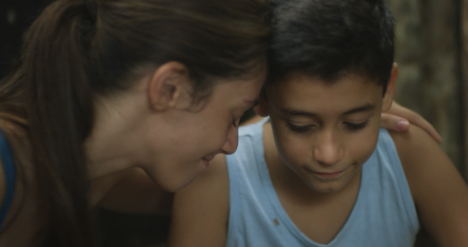
Lupe is the directorial debut of Andrè Phillips and Charles Vuolo. Lupe tells the story of the film’s namesake, a young transgender Latinx woman who has recently immigrated to New York City from Cuba. During Lupe’s childhood, her sister Isabel went missing and was believed to have been taken to New York City, where she was forced into human trafficking. Lupe has since dedicated her life to finding Isabel—going such lengths as repressing her own hopes and desires to navigate and, ultimately, embrace her gender identity and who she is as a person.
Lupe was written by Phillips and Vuolo with thematic consultation, writing assistance, and invaluable insight from Celia Harrison, a transgender artist, and performer. The film stars Rafael Albarràn (Lupe), Christine Rosario (Elsa), Celia Harrison (Lana), Kadeem Henry (Arun), and Lucerys Medina (Isabel). Lupe began shooting in 2015 and had its world premiere at the Cinequest Film Festival, in San Jose, California, in 2019. Lupe has since been acquired by HBO Latino and will stream on HBO and HBO Max starting February 26, 2021.
I had the privilege of speaking with Phillips, Vuolo, Albarràn, and executive producer Kerry Michelle O’Brien about this film and the unique approaches to ensure an authenticity that was felt throughout the film. Lupe serves as an example of methodical filmmaking, artistic collaboration, and allyship.
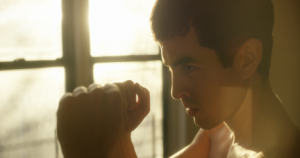
Upon meeting Lupe in New York City, we quickly find out that despite not having much money or resources to her name, she has become a successful boxing teacher with dedicated students and an incredibly supportive chosen family. Through impeccable continuity, we travel from Lupe’s childhood to the present day, both of which have many parallels. This not only provides necessary depth in our understanding of Lupe and how her experiences have contributed to where she is presently but encourages audience members to witness what hasn’t changed with Lupe. She is very much the same person she was while growing up, unapologetically loyal to her family, strong-willed, fearless in facing challenges, and taking every opportunity to get involved with boxing. This is monumental, as many subscribe to the belief that transitioning fundamentally changes who you are as a person, rather than the external and sometimes physical changes that occur. A significant change that often does occur with transition is a rise in confidence, self-love, and a brightness that only truly exists once you have found yourself and fully embrace that person with more love than you may ever believe possible. Lupe brings that affirmation to the screen as we can see that the core of who she is has remained the same, regardless of transitioning.
As Lupe searches tirelessly through brothels looking for Isabel, further causing her to push away her dreams of transitioning and finding solace within her gender identity, we notice just how integral her strength is for her survival: Lupe often takes on pimps within gritty alleyways as a means to speak with sex workers that may know where Isabel is. Fortunately, there are times when Lupe is free to be herself with no strings attached, and this is when she is with Lana, her best friend and invaluable mentor.
Harrison and Albarràn display a rich, intimate, and dynamic friendship on-screen that focuses on the unfiltered joy that comes from finding your community, the freedom in being true to yourself, and knowing that you are unconditionally loved and accepted. Some of the most poignant scenes in the film are when Lana and Lupe spend time together, as Lana provides affirmations out like the dresses, makeup, and wigs she lends to Lupe to assist in finding out her style. The two freely discuss the complexities of gender authenticity, preconceived notions about femininity and masculinity, and self-acceptance.
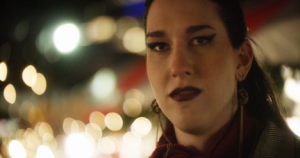
To capture these conversations’ raw and honest nature, Harrison and Albarràn improvised all of their scenes together; the two simply received general guidance in the plotline before shooting and were trusted with the rest. Albarràn attributes the success of these scenes to the bond they were able to build with Harrison upon meeting for the first time, which also happened to be on the first day of shooting. The two instantly clicked and provided safe space for one another, which allowed for such vulnerable conversations. Phillips and Vuolo attest to the power of the organic conversations between Harrison and Albarràn and recognize that these scenes far surpassed what they would have been able to write. Phillips explains that discovery is a far better mindset than prescribing, as the two directors put full trust into their cast, resulting in compelling, imperfect, and realistic characters that are far more relatable and tangible compared to others.
The drive for authenticity went far beyond the unscripted scenes as Phillips and Vuolo recall that they only lightly blocked the scenes, allowing the actors to freely express physically as they saw fit. Albarràn credits the freedom to explore and improvise as much as possible created a fluidity on set that noticeably impacted the film’s outcome. The narrative film began to take on a quasi-documentary feel as handheld cameras were able to get more intimate shots of the actors and provide location availability that isn’t possible with bigger cameras.
Phillips and Vuolo smile as they explain that even location wasn’t entirely set in stone; many shooting locations were discovered by the cast and crew the day of filming. One scene, in particular, follows Lupe as she meets a man on a train, played by Matt Saxon, and the two spend time walking around a neighborhood together. Phillips explains this was not planned; the scene required the cast and crew getting on and off trains and walking for miles in the freezing cold; however, the level of realism could not have been portrayed otherwise. Both Phillips and Vuolo recognize that some scenes’ spontaneity created challenges for the post-production team as they edited the final cut. The process of editing took on similar freedom as Shiran Amir, with assistance from O’Brien, worked vigorously on rebuilding the story’s structure through edits in pacing, timing, and the length needed to truly encapsulate the intimacy between Lana and Lupe as they spoke freely.
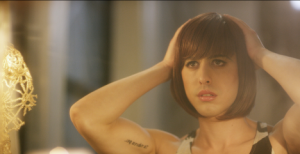
One of the more controversial aspects of Lupe revolves around the discussion of casting and gender presentation. Albarràn explains that it was only through filming that they were able to gain invaluable insight into their own gender journey and non-binary identity. Initially, audience members thought Lupe was being played by a cis man; which caused a commotion, specifically because films have historically cast cis men to depict transgender women and, as a result, unnecessary hate, misunderstanding, violence, and murder has plagued the community. This frustrated Albarràn as they explain that no one even asked them what pronouns they used; instead, the basis of these assumptions was made based on how they presented their gender, which was seen as “too cis.” Albarràn emphasizes, “I don’t have to wear high heels and nail polish to fit into your narrative…” They promote the idea that this film’s creation will ignite the dialogue needed to begin the healing and acceptance that has yet to happen within our own (LGBTQ+) community.
The film, according to Albarràn, validates itself, as it reflects our own snap judgments, rooted in fears and prejudices, based purely on one’s appearance and gender presentation. Additionally, Albarràn points out, Lupe doesn’t have the resources needed to transition, which is the reality for many transgender individuals. Albarràn further explains that womanhood is a very personal topic to everyone; there is no right way of presenting because there is an infinite number of possibilities. There is a scene in the film where Lupe confides in Lana about wanting to stop going to the gym because she doesn’t like how “masculinized” her body gets through her workouts. Albarràn strongly believes Lupe should not have to give up her love of boxing simply to pass for others; instead, Lupe should be supported in how she wishes to define femininity. Women can be muscular, Albarràn rationalizes, and in Lupe’s definition of womanhood, she doesn’t need to wear that much makeup; she doesn’t need to wear a wig; Lupe can present however she wants and still be a woman.
O’Brien further praises the film by saying, “This is one of the first stories I’ve seen where we [transgender people] are treated sympathetically. We are seen as genuine people that live and feel the same as others.” Both O’Brien and Albarràn agree that the ultimate takeaway for this film is the discussion that will inevitably come afterward, dissecting the very meaning of womanhood and femininity and providing space for everyone to define these terms for themselves. These conversations are long overdue within the country; Albarràn continues and further points out this is the same for the transgender community. It is the nuance in stories that provide space for conversations Albarrán says and anything that is created to start a necessary dialogue should be celebrated. Albarràn firmly reiterates that they do not need to prove their femininity to anyone because they know who they are and are incredibly proud of the work they did to get there. O’Brien experienced an incredible amount of self-acceptance through her journey on the film and mentions that due to her involvement, she felt confident to come out to her estranged children as transgender and to begin hormones despite being in her late 40s.
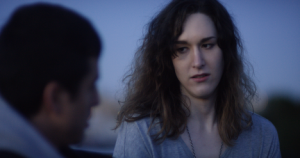
The success of this film needs to be attributed to the transgender, non-binary, and gender non-conforming individuals that contributed throughout its development. While Phillips and Vuolo provided the space for everyone to do so, they realize that there was no way they could have achieved the depth of character or sensitivity in approaching transgender issues without transgender people as a part of their cast and crew. Phillips and Vuolo recognize the damage that was brought onto the transgender community due to the misrepresentation of trans people; therefore, they respected the stories and identities of their crew. Further, as allies to the transgender community, Phillips and Vuolo knew that they had to put their full trust into their cast and crew, be open to communication and adjustments as needed, and know the limitations of their experiences in telling the story of Lupe. The directors trusted everyone’s experience and did not correct them; instead, they provided space to recreate the script that the actors deemed suitable for their characters.
Those with lived experiences need to take the lead of their own stories. When transgender artists, writers, or actors are left out of the picture, the seat at the table is taken up by someone else, someone who cannot represent that community. Being transgender is by no means a monolithic experience; there is no prescribed way of transitioning and everyone will experience their journey differently. By creating characters rooted in our own experiences and identities, we will be able to extend the reach of films far beyond what has been seen in the film industry.
Vulnerability is an essential part of our humanity and yet, it is terrifying to say “I don’t know,” or “I’m not the right person for the job.” We owe it to ourselves and others to provide space to those who have not been invited to the table. Imagine what it feels like to live in a world where your very existence and access to civil rights remains a constant debate, that your stories are not seen as “universal” or valuable but instead seen as a waste of time and money. Please, give your seat to someone who needs it.
I encourage distribution and production companies to embrace the incredible depth of characters that emerge from storytellers that are sharing their lived experience to an audience. People are not there for you to check off the box in your quota; support the work you claim is valuable by hiring transgender people on your staff, on your crew, as your actors. The crumbs have been good and fine, but our appetites are growing and the only way to salvage our needs is to be seen and understood. Do not stop here. Consider this the starting point to which you begin your hiring process, raise your expectations to provide meaningful content. Do not take the easy way out. Believe me, there are many willing participants that are eager to have their stories be seen and heard for the first time.
